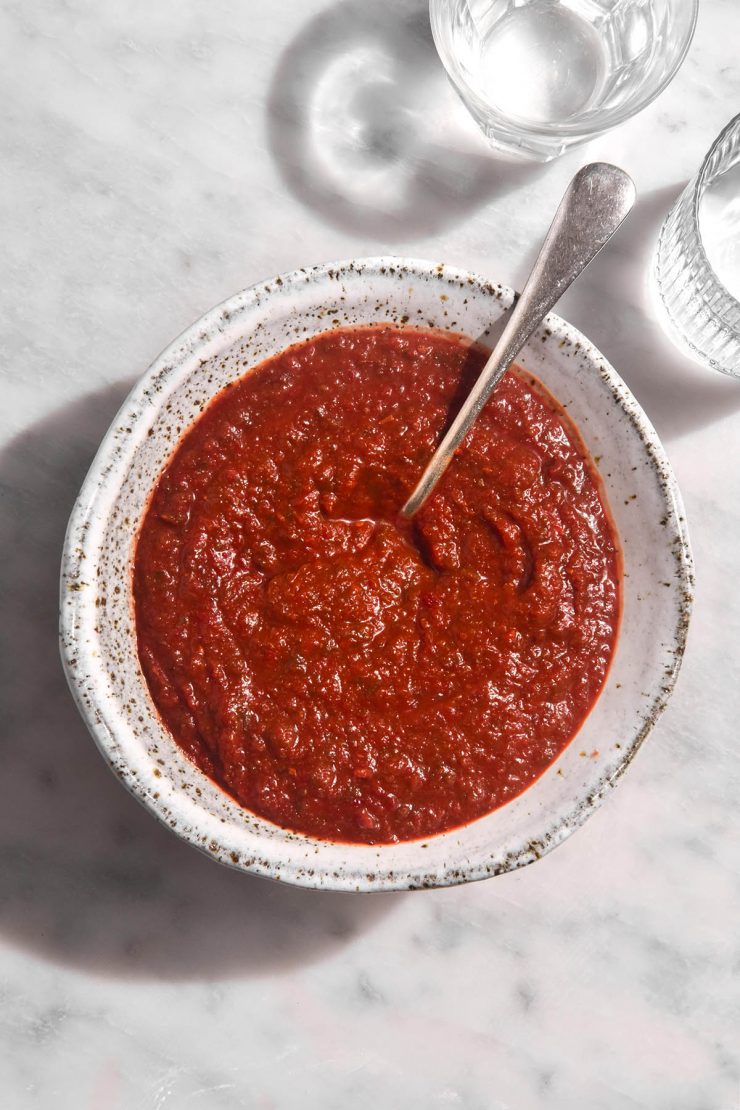
If you’re in the FODMAP world, you’d remember the collective panic when Monash lowered the FODMAP threshold for tomatoes. Although we needn’t change how many tomatoes we eat if they’re well tolerated, it still felt like a blow. I decided to develop this low FODMAP Nomato sauce to help lower the overall tomato content in my tomato based recipes for those who struggle with too many tomatoes.
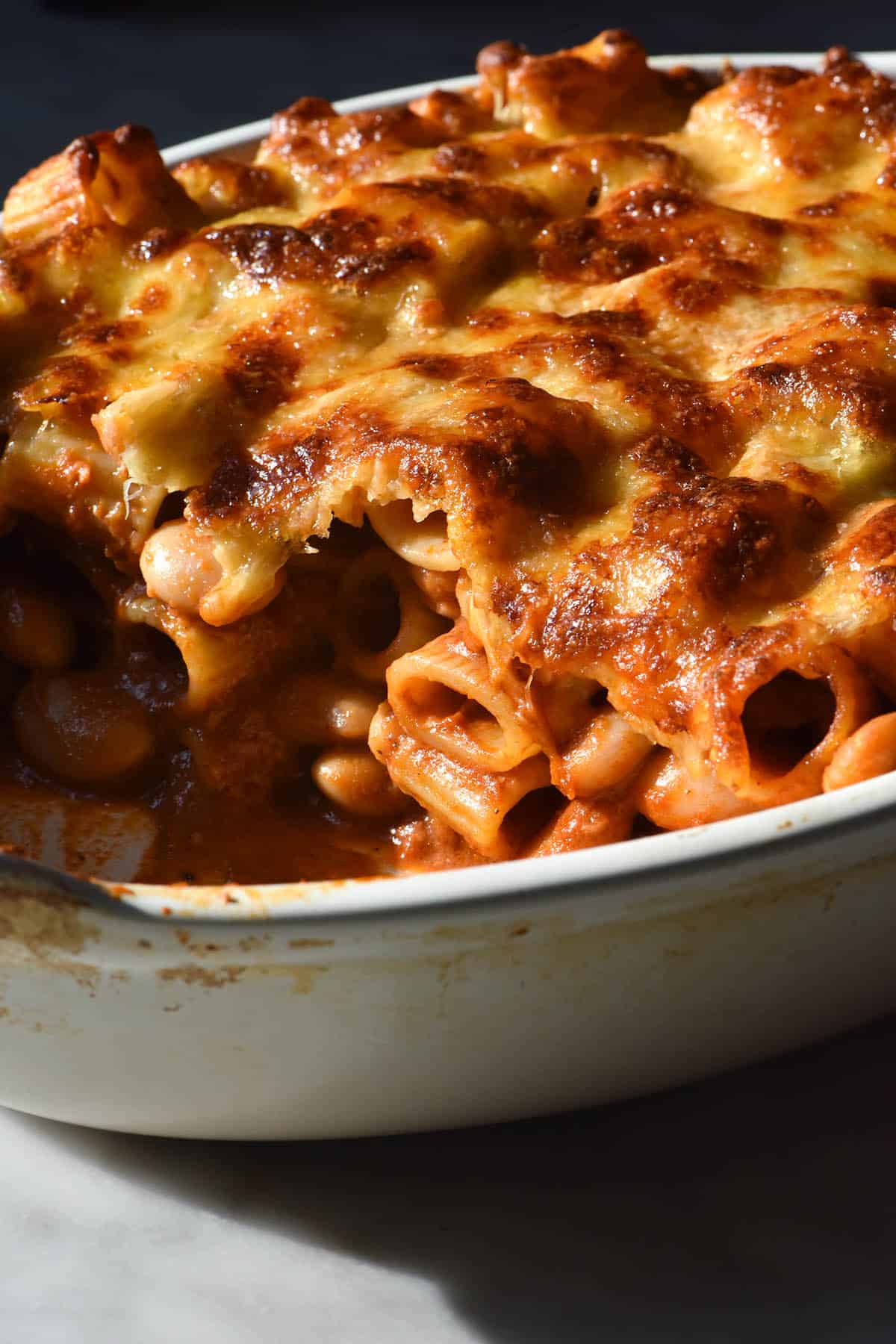
Low FODMAP Nomato sauce
This low FODMAP Nomato sauce is gluten free, vegan, and contains no onion or garlic. It is AIP (autoimmune protocol) compliant and is also nightshade free. Although it contains lemon juice, this Nomato sauce is lower histamine too. In the substitution section I’ll discuss ways to replace the lemon juice, if you need to.
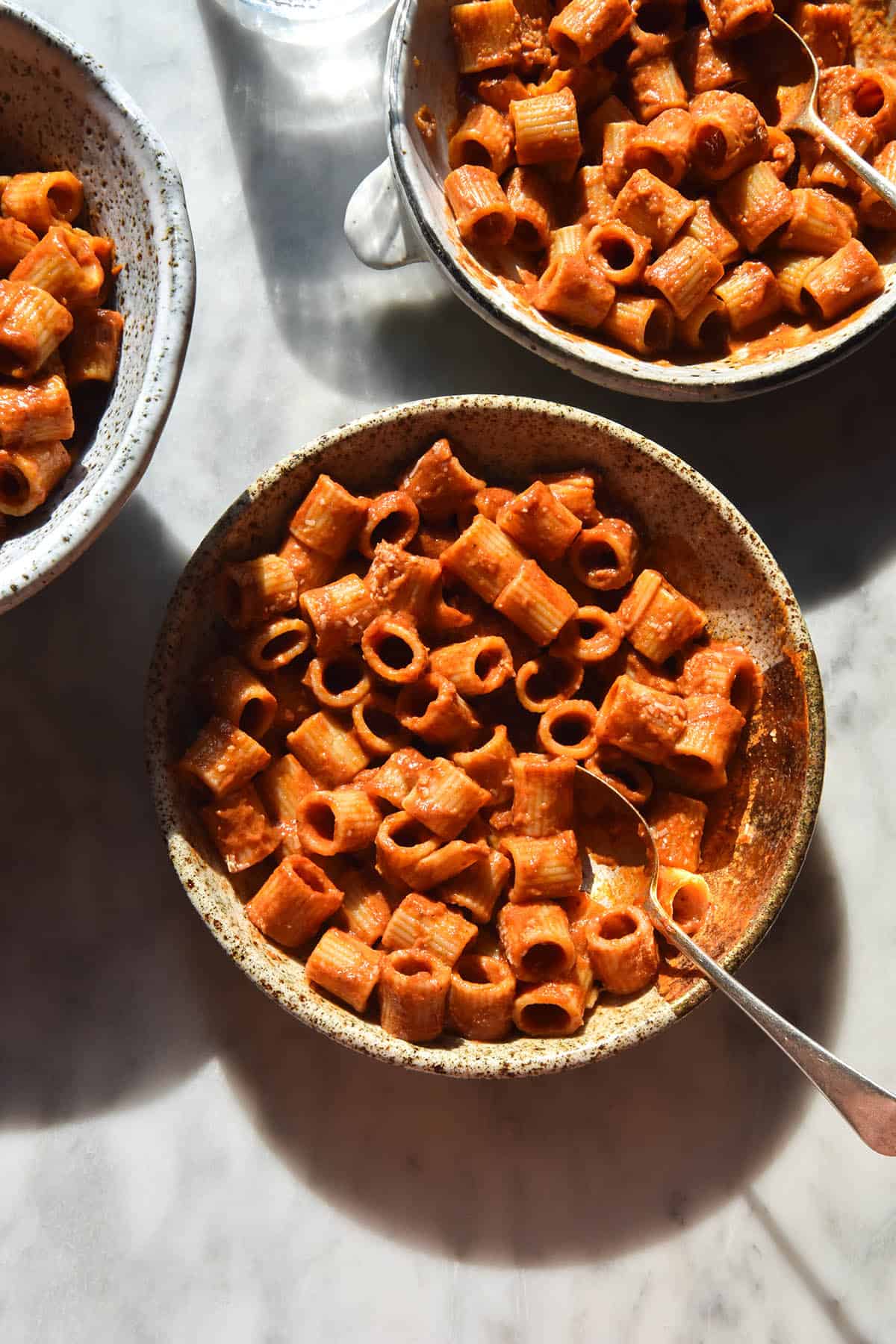
What is Nomato sauce?
Nomato sauce is simply tomato sauce made without tomatoes. This recipe is designed to work in a number of applications – as passata, tinned tomatoes, pizza sauce or pasta sauce.
It’s simple to make, freezes really well and doubles as a low FODMAP, low fructose tomato soup. As a bonus, it’s also undetectably packed with vegetables!

Where can I use this low FODMAP Nomato sauce?
Anywhere you’d regularly use passata, tinned tomatoes, pasta sauce or pizza sauce. You can adjust the thickness of the sauce to suit your intended purpose, too, which is an added bonus.
Some low FODMAP recipes or mine where you can use this sauce include:
- Low FODMAP, gluten free pizza
- Low FODMAP vegan and gluten free lasagne
- Vegan low FODMAP chilli (see the section on adjusting the flavour profile to suit your dish)
- Low FODMAP Malai Kofta
- Low FODMAP ‘not quite daal’
- Vegan, low FODMAP tagine
- SIBO bi phasic friendly vegan curry (especially if you’re doing the low histamine version)
- Low FODMAP vegan Shepherd’s Pie
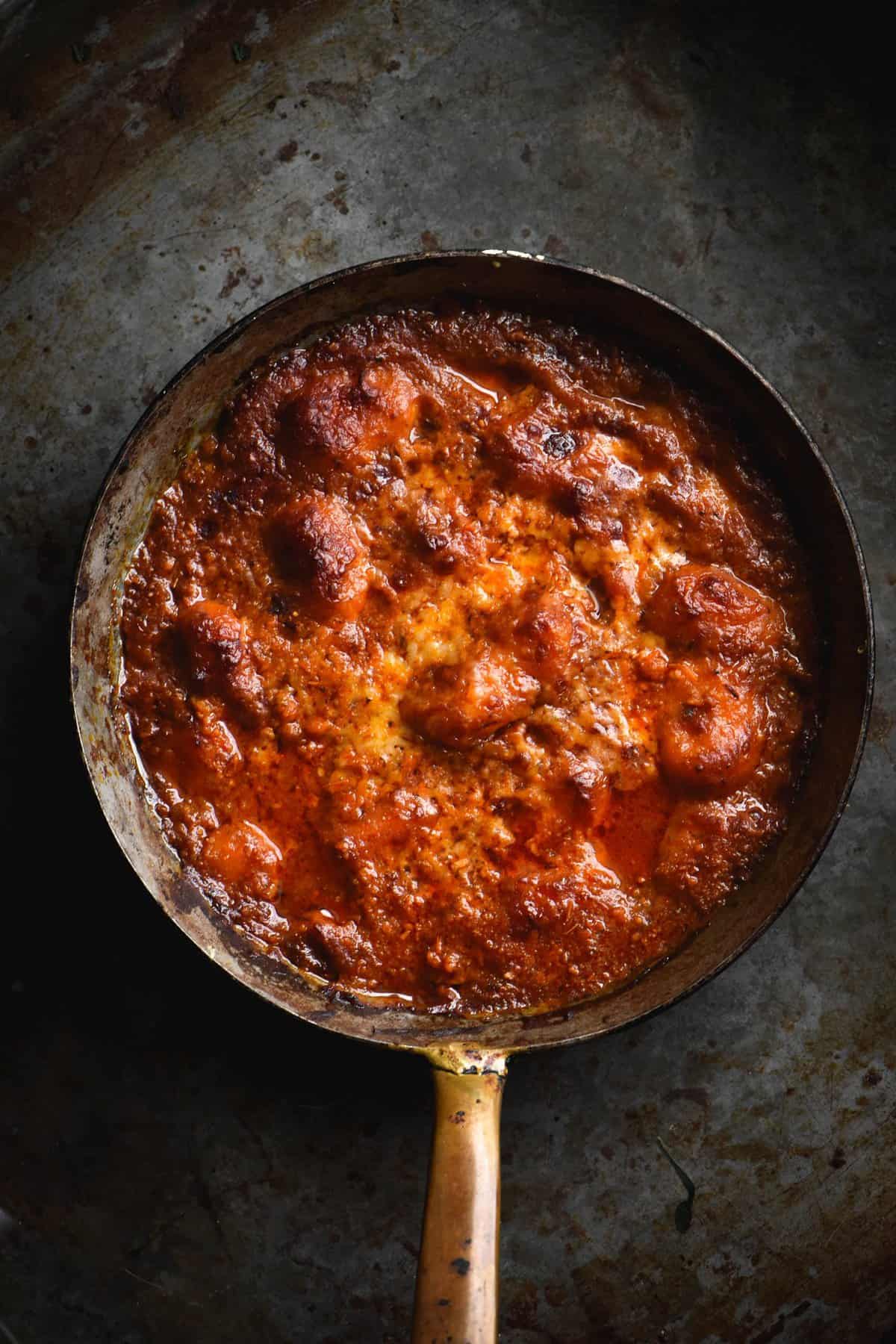
Recipe notes
Beetroot is included in this recipe for colour and earthy flavour. However, this isn’t an exact science. You might find that the beetroot doesn’t give your Nomato sauce enough colour. In which case, I suggest (and use!) the humble old red food colouring. You eat with your eyes and an orange coloured Nomato sauce isn’t fooling anyone. I don’t understand the demonisation of food colouring on occasion, but do whatever works for you.
On the note of beetroot, I recommend grating it or chopping it finely. It cooks slower than the other vegetables. When you throw it into the pot in large chunks, it will hold up the cooking process. Everything needs to be fully cooked before you blend the sauce.
If you’d like to make your own low FODMAP stock to use, I have a recipe here.
FODMAP notes
Beetroots are low FODMAP in 25g serves. In 32g serves, they contain moderate amounts of fructans and GOS. This recipe uses 100g beetroot, but it makes 1.2kg Nomato sauce. This is equivalent to 3 X 400g tins of tomato. Generally, 1 tin of tomato is used per recipe which serves 4-6. So depending on what you are using the recipe for, this should not be an issue. With that said, it can still safely serve 4 for the whole batch.
Spring onion greens have recently had a FODMAP limit introduced. They are low FODMAP in 75g serves and contain moderate amounts of fructose in serves exceeding 97g.
Monash have recently (as of November 2024) lowered the threshold for Japanese/Kent pumpkin. It is low FODMAP in 75g serves and up to 161g serves per person. In 162g serves, it contains moderate amounts of fructans. It is still the pumpkin variety that you can eat most of on the low FODMAP diet. Another thing to keep in mind is that you don’t need to change anything if you have been eating pumpkin without issue prior to this change.
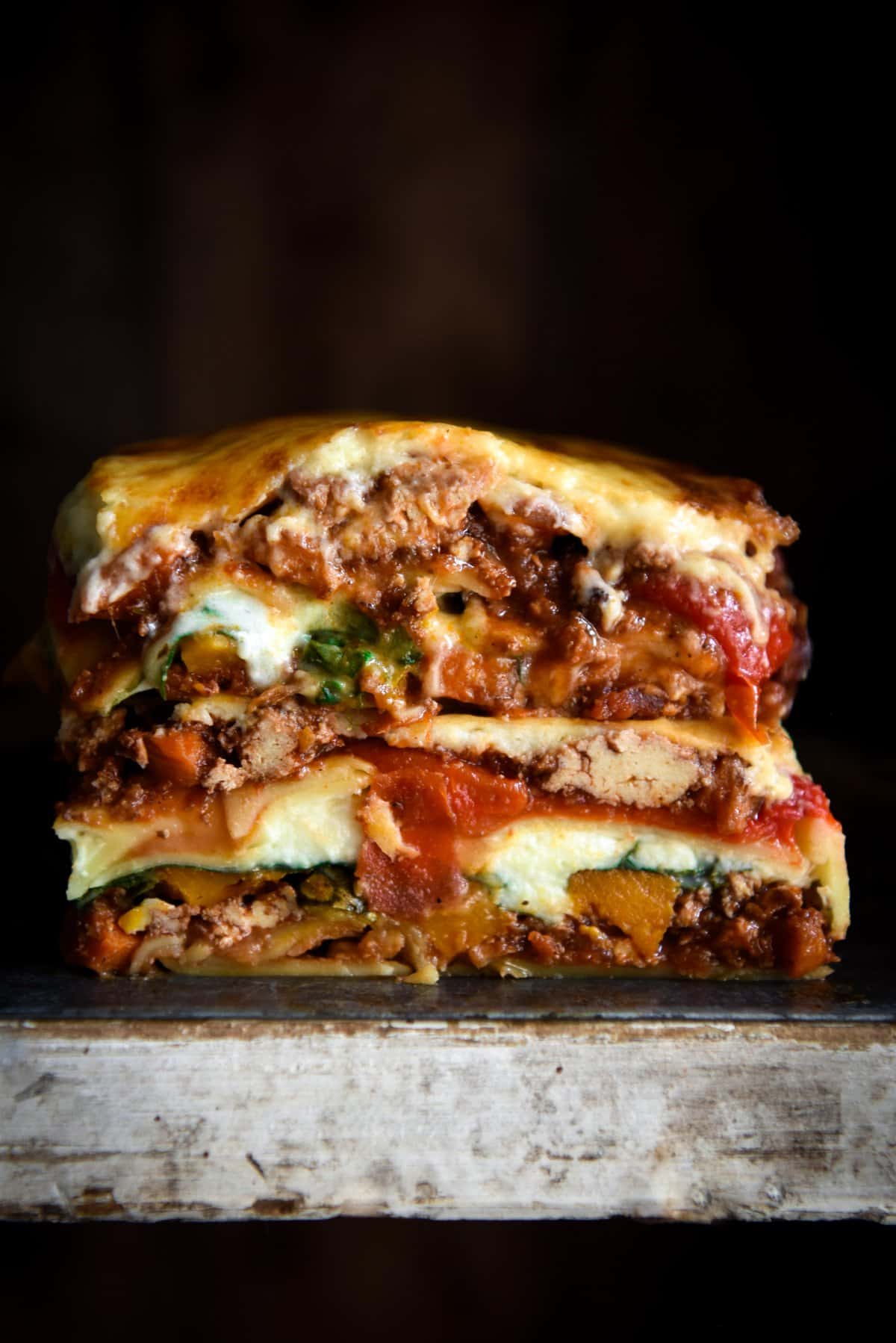
How to adjust the flavour profile of your low FODMAP Nomato sauce
A basil and oregano based Nomato sauce doesn’t fit seamlessly with every style of dish. Although it works perfectly for Italian inspired dishes, it’s less appropriate for a Mexican inspired chilli.
The simplest way to adjust this Nomato sauce for other cuisines is simply to omit the basil and oregano. Because it is a base for the dish, it needn’t have bold flavours. Think of it like a tin of plain tomatoes – it acts as a bulking ingredient that provides a base note of flavour and acidity. The flavour will be added to the dish separately.
If you’re so inclined, however, you can play around with some flavours that suit the dish you intend to make. Some suggestions:
- Some fresh or dried sage for Italian based dishes (if you have some lying around)
- Coriander (roots and stems) for Indian or Mexican inspired dishes
- Flat leaf parsley for Mediterranean inspired dishes
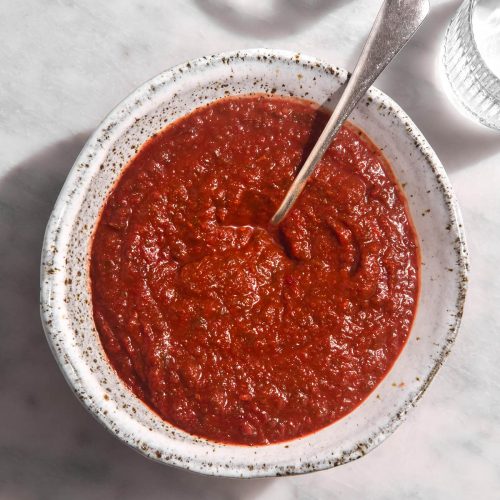
Low FODMAP Nomato sauce
Ingredients
For the Nomato sauce:
- 60 ml (3 tablespoons)* oil or garlic infused ghee, see notes section
- 1 bunch spring onion greens chopped (75g)
- 1 bunch of basil chopped and woody stems removed (75g)
- 100 g beetroot chopped into small pieces
- 750 g Kent or Japanese pumpkin skin removed and chopped into small/medium pieces
- 500-1000 ml (2-4 cups)* water or low FODMAP vegetable stock, as needed
- 40 ml (2 tablespoons)* Tamari or gluten free soy sauce
- 40 ml (2 tablespoons) lemon juice or red wine vinegar
- 2 tablespoons dried oregano
- Seasoning to taste
Optional ingredients:
- 1/2 – 1 tablespoon maple syrup or sweetener of choice this will depend on how sweet your pumpkins are
- Extra lemon juice
Instructions
- Preheat a soup pot over a medium heat. Add the oil or ghee and heat for a minute or so. Add the spring onion greens and allow them to sizzle, cooking until fragrant.
- Add the basil, beetroot, pumpkin and 500ml (2 cups) of water or stock and stir to combine. Add the Tamari, balsamic vinegar and oregano and stir again.
- Place the lid on and cook the sauce for 15-25 minutes or until the vegetables are completely cooked. Add water as necessary, but try not to add too much. You can add more later to achieve the right consistency, but you can’t take it back.
- Once the vegetables are completely cooked, use a soup stick to blend until you reach a passata consistency. You can also use a blender, but only blend warm things in a blender with an air hole as blenders like Nutribullet will explode with hot liquid in them (there’s nowhere for steam to escape).
- Once blended, taste and adjust for seasoning. Add salt and pepper to taste, along with some maple syrup and/or lemon juice to achieve a tomato like taste.
- Use the nomato sauce wherever you would use tinned tomatoes, passata or pasta sauce. See the notes in the body of the post about adjusting the flavour profile to suit the dish you’re making.
Notes
- I have a recipe for Low FODMAP vegetable stock which you can find here.

Thank you so much for this recipe! I have SIBO and histamine intolerance so this nomato sauce is a dream come true. I can’t believe how much it tastes and looks like tomato sauce. Delicious!
Can I use canned pumpkin???
Canned pumpkin is not commonly available here in Australia so I can’t say for sure. I did try Libby’s brand in something else once though and I found it was far less sweet than fresh pumpkin. I wonder if it might throw off the balance of sweet to sour here (which is important to emulate tomato) so I would probably recommend fresh over canned
We used a combination of butternut squash and sweet potato and it worked beautifully
So glad you enjoyed it Jen! Great to hear it works with some sweet potato in there too 🙂
I’m excited to try this, however the red food colouring thing really isn’t demonising it if it’s truly bad, especially for guts… https://www.ncbi.nlm.nih.gov/pmc/articles/PMC10502305/?mibextid=Jwwqyc#:~:text=Red%2D40%20damages%20DNA%20both%20in%20vitro%20and%20in%20vivo
That’s a good reason to avoid red food colouring. There’s a reason its banned in Europe.
Hi Diana, thanks for linking that study! Very interesting. I will say that red food dye 40 (the one mentioned in that study) is not the red dye in most common supermarket brands of dye in Australia (which is where I live, not sure where you are based).
For some people, their priority with this recipe is making it look like tomato sauce so their kid will eat it. That might not be your priority, and that’s fine! You don’t need to use it.
As the post says, ‘I don’t understand the demonisation of use of it on occasion.’
Hope you enjoy 🙂
This is THE BEST nomato sauce we’ve tried!! Thank you so much!!